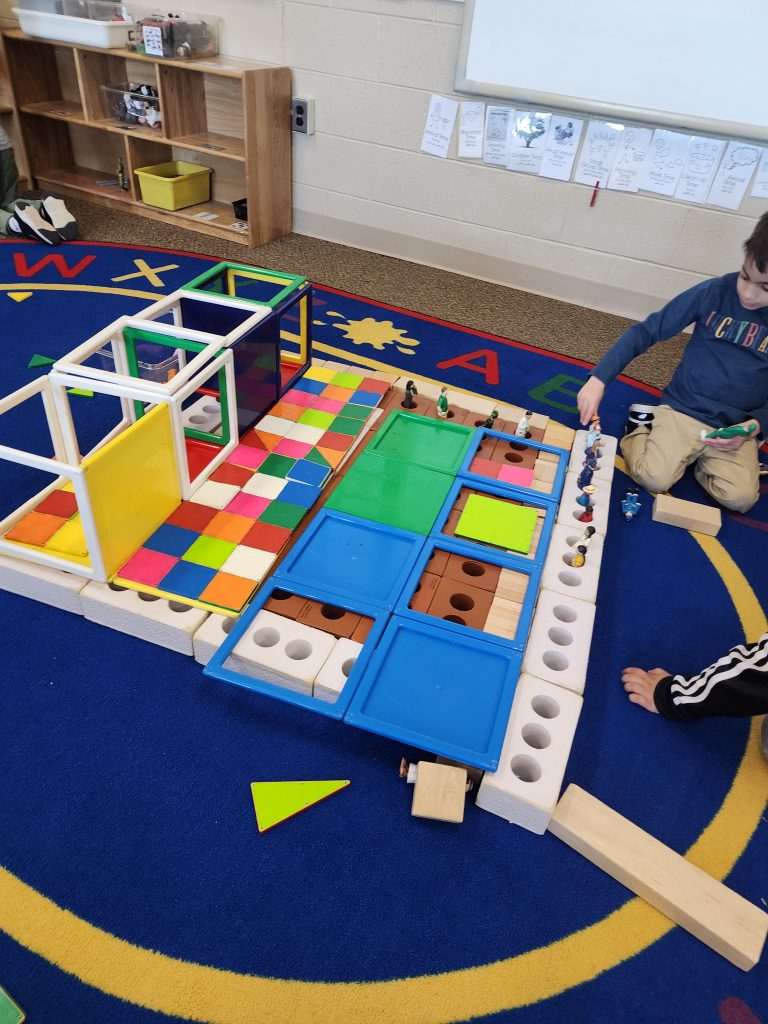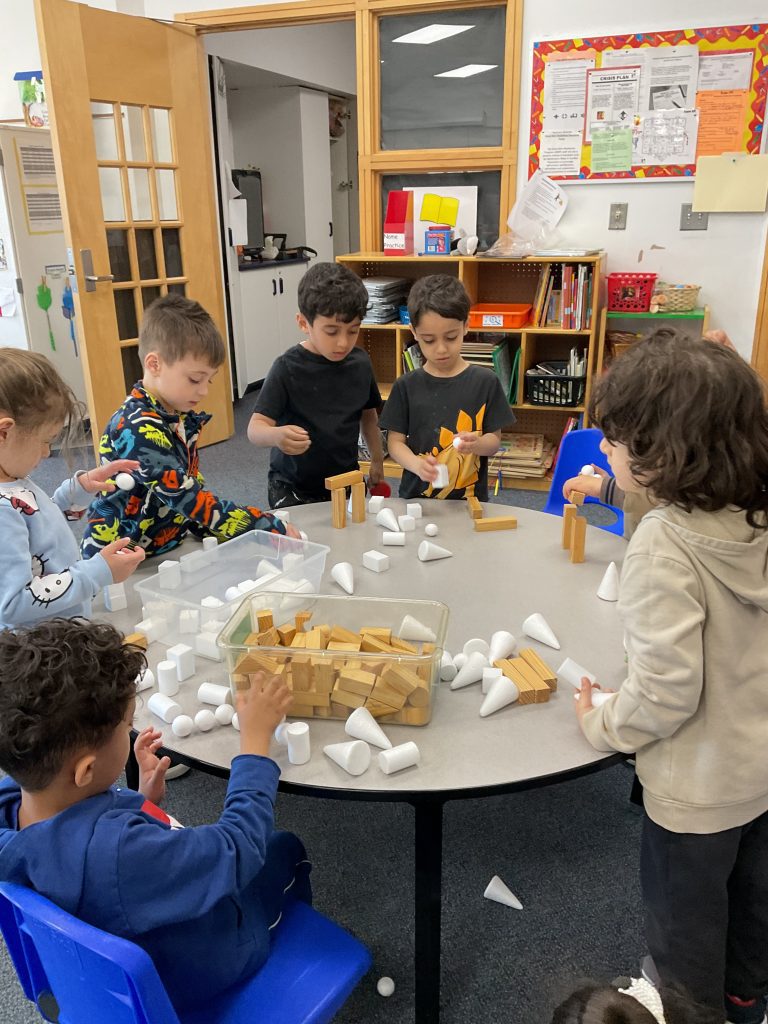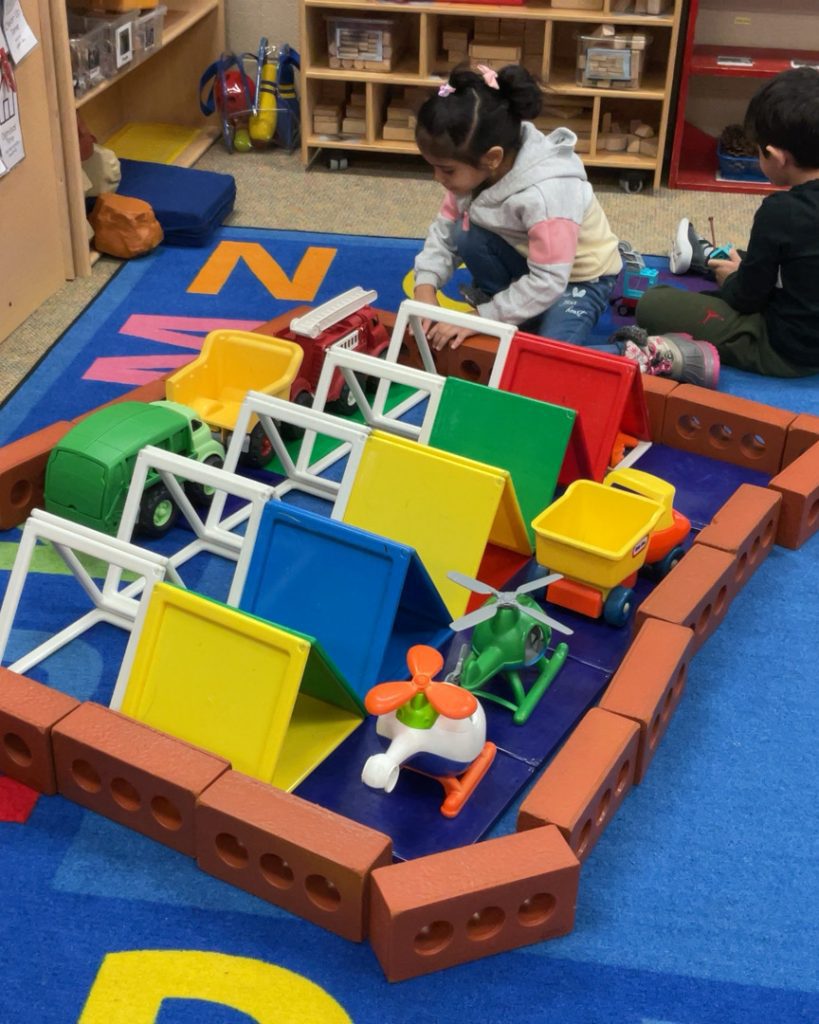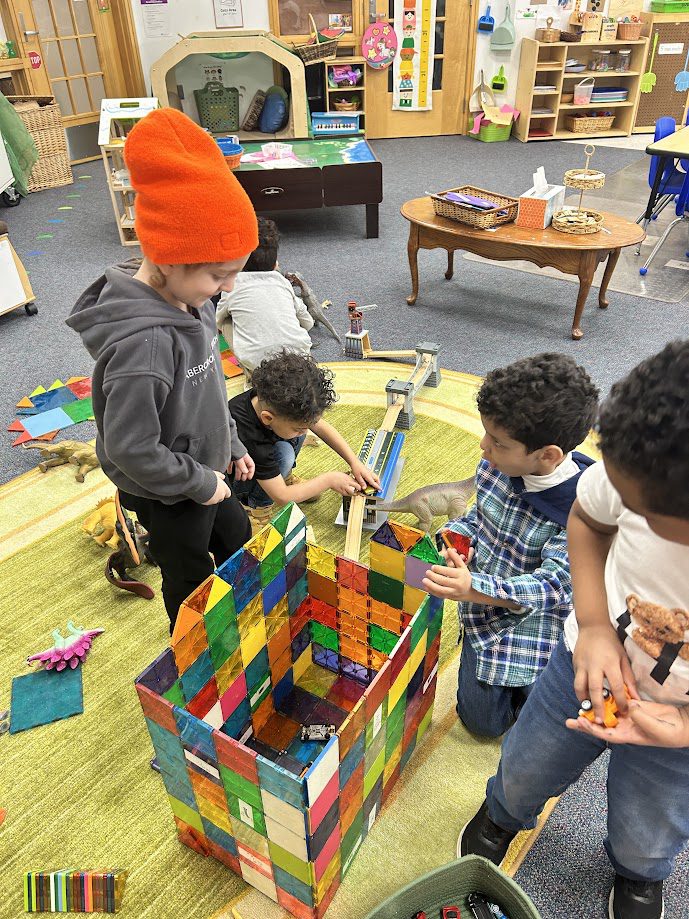Block Area: The Heart of the Prek Classroom!
Block play is an essential part of not only preschool, but early childhood learning. Children naturally gravitate towards this area, and use it in a wide variety of ways. Our GSRP classrooms have well stocked block areas that may include, wooden blocks, foam blocks, lego bricks, animals, trucks, people, tools, ramps, cars, tracks, cardboard, magnet tiles. etc. Below is a Top 10 List of the things preschool children are learning when they play with blocks inside our classrooms!
- Problem solving. Children must decide what they want to build, how they will build it, what happens if it falls down? what happens if they run out of materials? Working through these problems is a key skill for children to develop as they grow and become familiar with making mistakes, and how to fix them.
- Imagination. Children can follow their own plan, or they can share a friend’s vision and work together to create something new! When children begin to collaborate with one another, and incorporate added materials (cars, animals, etc.) to their block play, imaginations run wild!
- Self-expression. Blocks offer many ways for young dual language learners to explore, express themselves, and demonstrate what they are learning across languages. Whether it is a smile that comes along with the sense of pride when a child builds something they were working on, or the turned down face and the crossed arms that tell us the child might be frustrated with what they are doing. Communication through self expression is always readily available in the block area.
- Mathematics. Important concepts and skills are practiced and strengthened through block play, including length, measurement, comparison, numbers and counting, estimation, symmetry, balance, geometry/shapes, etc.
- Continuity and permanence. Block play engages spatial sense and motor abilities.
- Creativity. Blocks and other loose parts can be moved freely by children, to be combined and recombined in countless ways.
- Science. Blocks offer opportunities to test hypotheses and build scientific reasoning, use tools and technology, as well as experiment with cause and effect, forces and motion, etc.
- Self-esteem. Children discover that they have ideas and that they can bring their ideas to life by creating, transforming, demolishing, and re-creating something unique. Children often feel great pride in their work when they have labored over a new structure or building in the block area. Or when they have figured out how to over come a problem with balance, size, shape, etc.
- Social and emotional growth. Blocks help children learn to take turns and share materials, develop new friendships, become self-reliant, increase attention span, and cooperate with others.
- Development in all areas. Block play requires fine and gross motor skills. Blocks enhance children’s problem-solving abilities, mathematics skills, and language and literacy abilities. And constructing “creations” builds self esteem and feelings of success.
Credit to: https://www.naeyc.org/resources/pubs/yc/mar2015/ten-things-children-learn-block-play
Check out block play across the district in our GSRP classrooms:
























